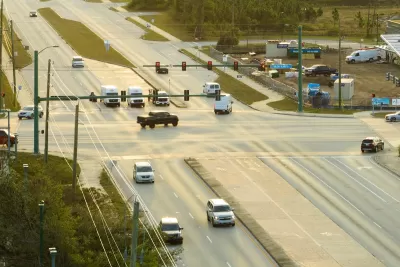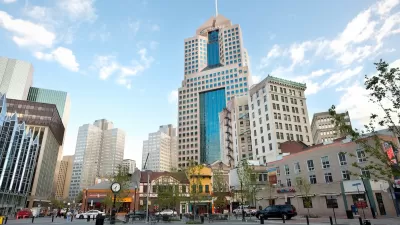Three-fourths of counties with the highest pedestrian death rates also had persistently high poverty rates, according to a Stateline article.

Pedestrian deaths have dropped nationally after three years of increases but are still 14 percent higher than before the pandemic, reports Tim Henderson of Stateline. Analysis by Stateline of how those rates are playing out across the country has revealed that pedestrians are dying at the highest rates, not in big cities with crowded sidewalks, “but in Western and Southern rural areas and small cities where poverty forces more people to walk on dark highways with inadequate sidewalks or shoulders.” Henderson reports.
“[A]cross the country, the 33 counties with the highest rates — each with more than twice the national rate of 2.5 pedestrian deaths per 100,000 — are mostly in the South and West,” according to the Stateline article. While big cities like Los Angeles, Phoenix, and Houston had the highest numbers of pedestrian dates, the rates per resident were lower. Of the counties with the highest rates, more than three-fourths have poverty rates above 20 percent, and pedestrian deaths tend to occur in high-poverty areas within those counties.
Another commonality? The deadly stroad — a mix between a street and road — which tries to balance the incompatible roles of facilitating foot traffic while also trying to move cars quickly. The combination of stroads and concentrations of low-income people who are less likely to own cars means people with lower incomes, including unhoused people, are more likely to be walking alongside and crossing roads in the most dangerous areas, according to the article.
FULL STORY: Social Issues Society Transportation Dark highways, fast cars, few sidewalks — and more pedestrian deaths

Alabama: Trump Terminates Settlements for Black Communities Harmed By Raw Sewage
Trump deemed the landmark civil rights agreement “illegal DEI and environmental justice policy.”

Planetizen Federal Action Tracker
A weekly monitor of how Trump’s orders and actions are impacting planners and planning in America.

The 120 Year Old Tiny Home Villages That Sheltered San Francisco’s Earthquake Refugees
More than a century ago, San Francisco mobilized to house thousands of residents displaced by the 1906 earthquake. Could their strategy offer a model for the present?

BLM To Rescind Public Lands Rule
The change will downgrade conservation, once again putting federal land at risk for mining and other extractive uses.

Indy Neighborhood Group Builds Temporary Multi-Use Path
Community members, aided in part by funding from the city, repurposed a vehicle lane to create a protected bike and pedestrian path for the summer season.

Congestion Pricing Drops Holland Tunnel Delays by 65 Percent
New York City’s contentious tolling program has yielded improved traffic and roughly $100 million in revenue for the MTA.
Urban Design for Planners 1: Software Tools
This six-course series explores essential urban design concepts using open source software and equips planners with the tools they need to participate fully in the urban design process.
Planning for Universal Design
Learn the tools for implementing Universal Design in planning regulations.
Clanton & Associates, Inc.
Jessamine County Fiscal Court
Institute for Housing and Urban Development Studies (IHS)
City of Grandview
Harvard GSD Executive Education
Toledo-Lucas County Plan Commissions
Salt Lake City
NYU Wagner Graduate School of Public Service





























